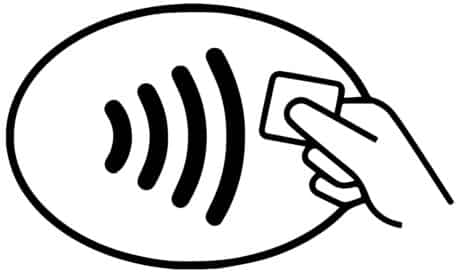Mobile payments
Mobile payment services are seeing increasingly widespread adoption, as consumers embrace the simplicity of conducting transactions with their smartphones. Using mobile wallets such as Apple Pay, Google Wallet, and Samsung Pay, customers can make simple and secure purchases.
All it takes are a few taps on their phones.
This payment innovation eliminates the need to carry cash, credit cards, or debit cards, and lets users carry out yet another everyday task using only their smartphones.
Data from surveys conducted by Worldpay shows that the popularity of digital wallets in the US has quadrupled over the past five years. They are now the preferred payment choice for about 12% of respondents. In line with this, Juniper Research predicts mobile wallet payments will cross $10 trillion by 2025.
Accordingly, businesses must stay aware of popular new payments technology and prepare to accommodate it. This includes POS hardware capable of processing mobile payments, but also training workers to handle these transactions.
Businesses that accept digital payments provide a better shopping experience for their clients and are well-prepared to keep up with shifting payment patterns.
Contactless payments

NFC (Near Field Communication) enables safer and faster payments without physical contact between the payment card or device and the payment terminal.
This makes NFC a quick and handy choice for everyday purchases. To pay, users simply hold their NFC-enabled device or card near the terminal.
Contactless payment is simple and sanitary, boosting its adoption in a post-pandemic world. With the support of major financial institutions, NFC technology is now a staple of everyday payment.
Accordingly, Juniper Research expects the value of contactless payments to more than triple between 2020 and 2025, reaching around $1.64 trillion.
Wearable payments
Wearable payments allow customers to pay with their wearable devices, such as smartwatches and fitness trackers – no phone or wallet needed. This is especially helpful for people on the go or those who take a minimalist approach to carrying personal items.
Like the contactless options mentioned above, wearable payments use NFC technology to communicate with the payment terminal.
Biometric payments
Biometric payments have a number of benefits over traditional methods of payment: They are more secure, convenient, and accessible.
Biometric data is unique to each person and difficult to steal and duplicate. Only the approved user can initiate a purchase or access confidential financial information, which reduces the risk of fraud.
Additionally, users no longer need to carry physical credit cards or recall complicated passwords. Biometric authentication lets them make payments swiftly and effortlessly.
Inclusivity is another potential benefit of biometric payments: They can be used by individuals who struggle with traditional payment methods due to disabilities or other factors.
Biometric systems were previously used by law enforcement and security organizations, but they will likely see wider use in commercial settings in the coming years.
Still, there are confidentiality and safety concerns with storing biometric data. To overcome them, numerous companies are looking into methods to protect user data and ensure that these systems can be used securely and efficiently.
Mature biometric technology could revolutionize how we pay for products and services, making payments quicker, safer, and more seamless than ever.
The future of payment innovation
Technology is rapidly changing the global payments ecosystem and thus how we pay for products and services. Digital wallets, contactless and wearable transactions using NFC, as well as biometric payments all strive to make payments quicker, more secure, and more efficient than ever.
As these technologies mature and see broader adoption, they open up new possibilities for companies and customers. While there are still obstacles, such as security, privacy, and regulatory compliance issues, these payment innovations have obvious advantages and are primed to take off.







